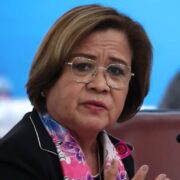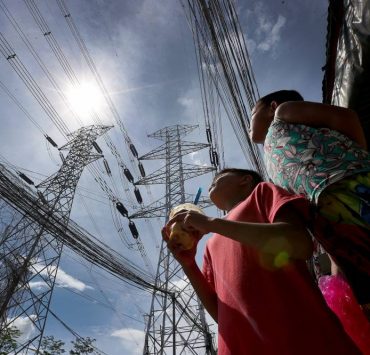Aspiration to be a rich nation

Every nation desires to be as rich as, or even richer than, her neighbors. The Philippines is no exception. For years, it had tried to crawl up the global rankings on national wealth. Sadly, since 1987, the Philippines has languished in the lower-middle-income country (MIC) group under the World Bank’s tally of global economies.
The multilateral lender released last week its latest assessment of where countries stood for 2024-2025. It uses what it calls the gross national income (GNI) per capita, or the total amount of money earned by a country’s people and businesses divided by its population.
GNI tracks a nation’s wealth from year to year and includes the gross domestic product (GDP) plus the income it receives from abroad such as remittances from overseas workers. A higher GNI per capita indicates greater economic prosperity and, to some extent, better living standards.
The Philippines remains under the lower MIC group, which the World Bank defines as those with a GNI per capita ranging between $4,516 and $14,005 for the fiscal year 2025.
The World Bank report estimates the country’s GNI per capita at $4,230 in 2023, which is up by 7.1 percent from the preceding year.
The National Economic and Development Authority (Neda) describes it as “a historical high,” surpassing the 2023 target range of $4,130 to $4,203 set in the PDP. In 2001, the Philippines had a GNI per capita of $1,170, higher than Indonesia’s $710 and Vietnam’s $400.
COVID-19 pandemic
In the latest tally, Indonesia had a GNI per capita of $4,870, exceeding that of the Philippines, while Vietnam logged in $4,183, or not too far from ours. Thailand, another neighbor that many economists use to compare the Philippines with, already had a GNI per capita of $1,960 in 2001, which jumped to $7,180 in the latest ranking, putting it in the upper MIC group together with Indonesia and Malaysia. More prosperous neighbors Singapore and Brunei are in the high-income bracket.
President Marcos, in his inaugural State of the Nation Address in 2022, had targeted reaching the upper MIC status by 2024 but decided to push back that goal due to the economic impact of the COVID-19 pandemic. Climbing to the upper MIC group in the coming years will be more difficult after the World Bank increased in 2023 the threshold to a GNI per capita of between $4,516 and $14,005, from between $4,466 and $13,845 previously.
Still, the Neda is optimistic. Neda Secretary Arsenio Balisacan insists that the country’s goal to reach upper MIC status can be achieved in late 2025 or early 2026.
“It is quite there because the threshold is $4,500,” notes Balisacan, citing that the country’s gross national income (GNI) per capita only needs to grow by 6.7 percent this year. Balisacan also looks at the latest ranking positively for exceeding the GNI per capita target for 2023 under the Philippine Development Plan (PDP) 2023-2028.
Growth forecasts
Sadly, the latest ranking is not, as the Neda puts it, “a testament to the country’s robust economic growth and solid macroeconomic fundamentals.” It actually reflects the slow progress the country is making to expand its economy in step with population growth. Also, remember that raising GNI per capita hinged on both total economic expansion and population growth.
In 2023, the World Bank puts Philippine population growth at 1.5 percent, compared to Indonesia’s 0.7 percent; Malaysia’s 1.1 percent; Thailand’s 0.1 percent, and Vietnam’s 0.7 percent.
In short, even if the GNI expands as expected but the population that will share it grows as well, the resulting GNI per capita will be lower. Growth forecasts for 2024 and 2025 are also not that bright. The Asian Development Bank forecasts the Philippine economy to grow by 6 percent this year and 6.2 percent in 2025. The World Bank projects a growth of 5.8 percent this year and 5.9 percent in 2025.
Aspiration for countries
Perhaps the only consolation from the latest rankings is that the country’s delayed climb to upper MIC status may benefit the Philippines at a time when it plans to borrow more from multilateral lenders and bilateral development partners to repay the debts incurred by the government to fund a costly pandemic response.
Had the Philippines become an upper MIC this year, it would lose access to concessional interest rates currently being charged on official development assistance loans.
The Marcos administration does not have to put too much weight on becoming an upper MIC. The income rankings are simply an aspiration for countries to avoid being called poor.
As Neda’s Balisacan admits: “What matters more to us is that the fruits of economic growth—opportunities, better jobs, and higher incomes—are felt by all Filipinos, especially the poor. The government must persist in its efforts to ensure that our economic gains are shared equitably, with the aim of reducing the poverty rate to a single-digit level by 2028.” This indeed is where the government must focus its efforts on.

















